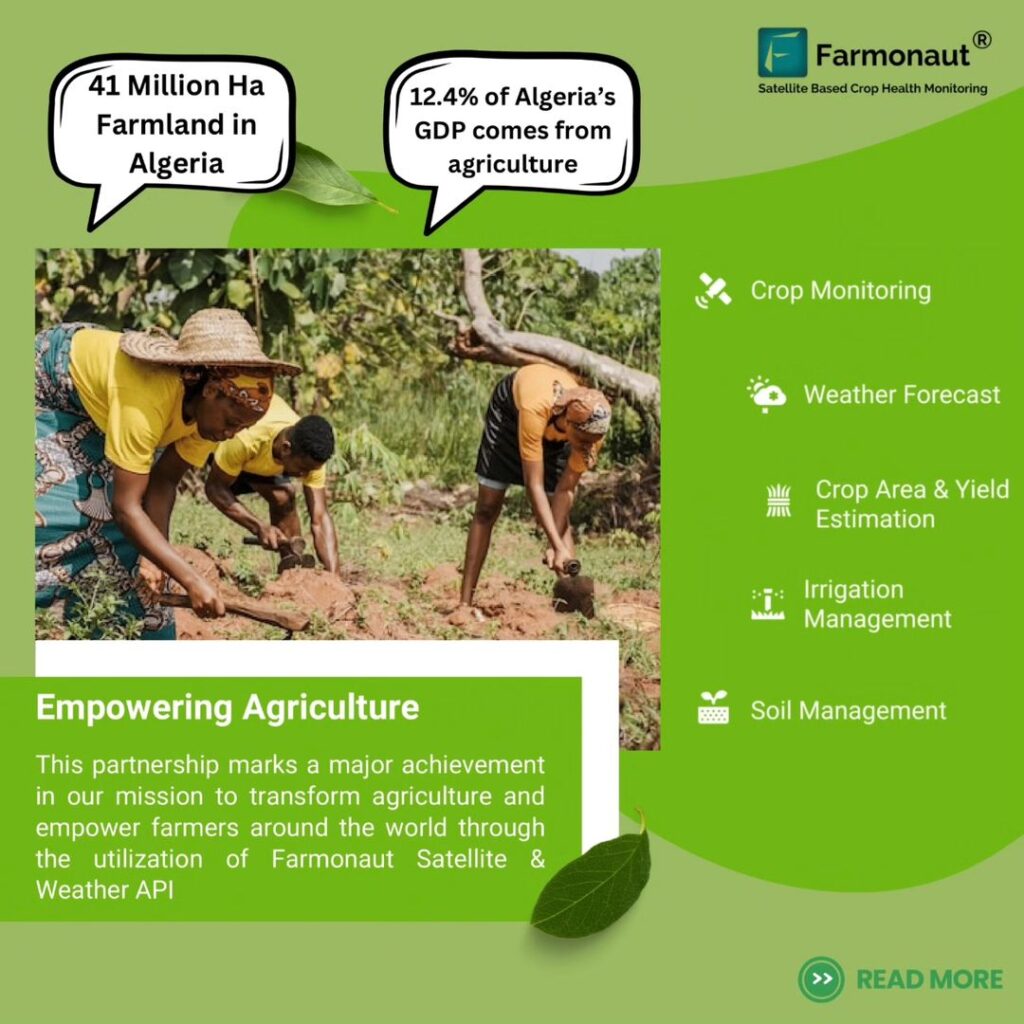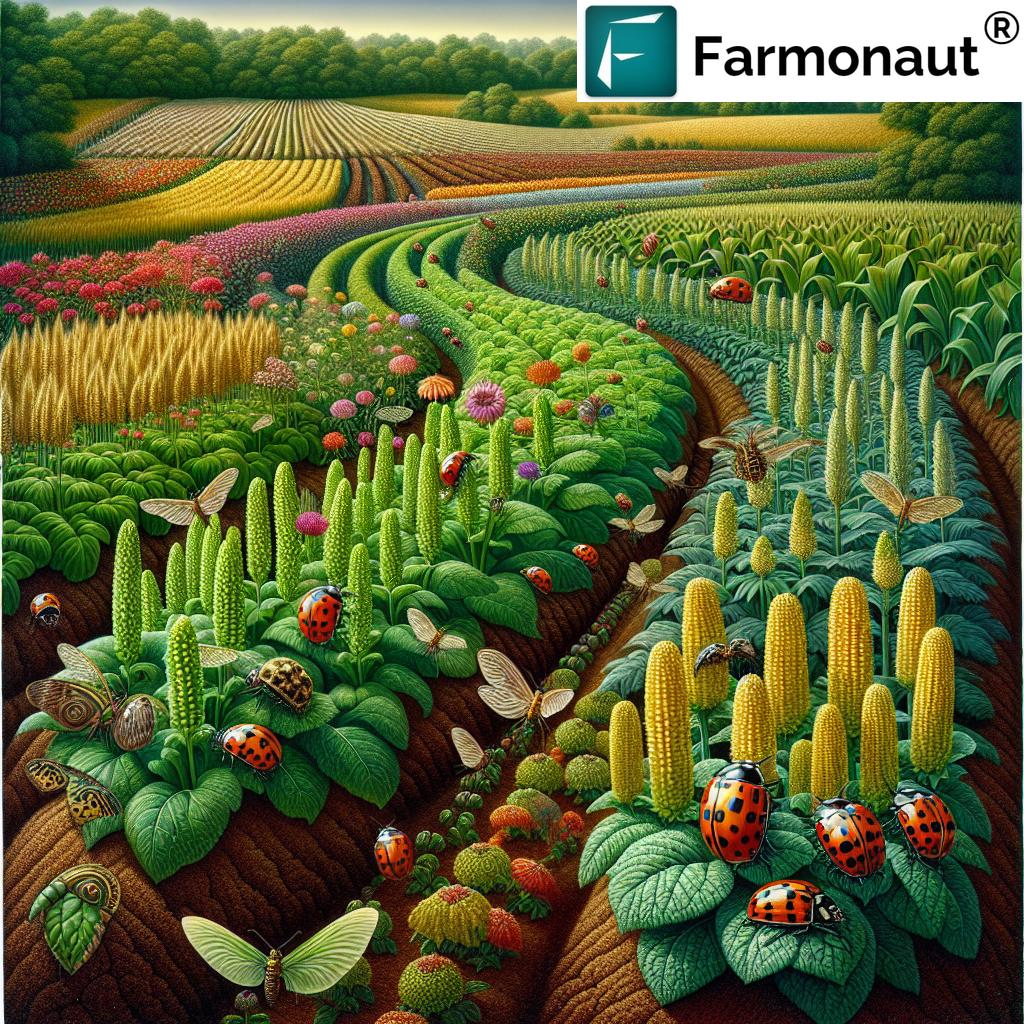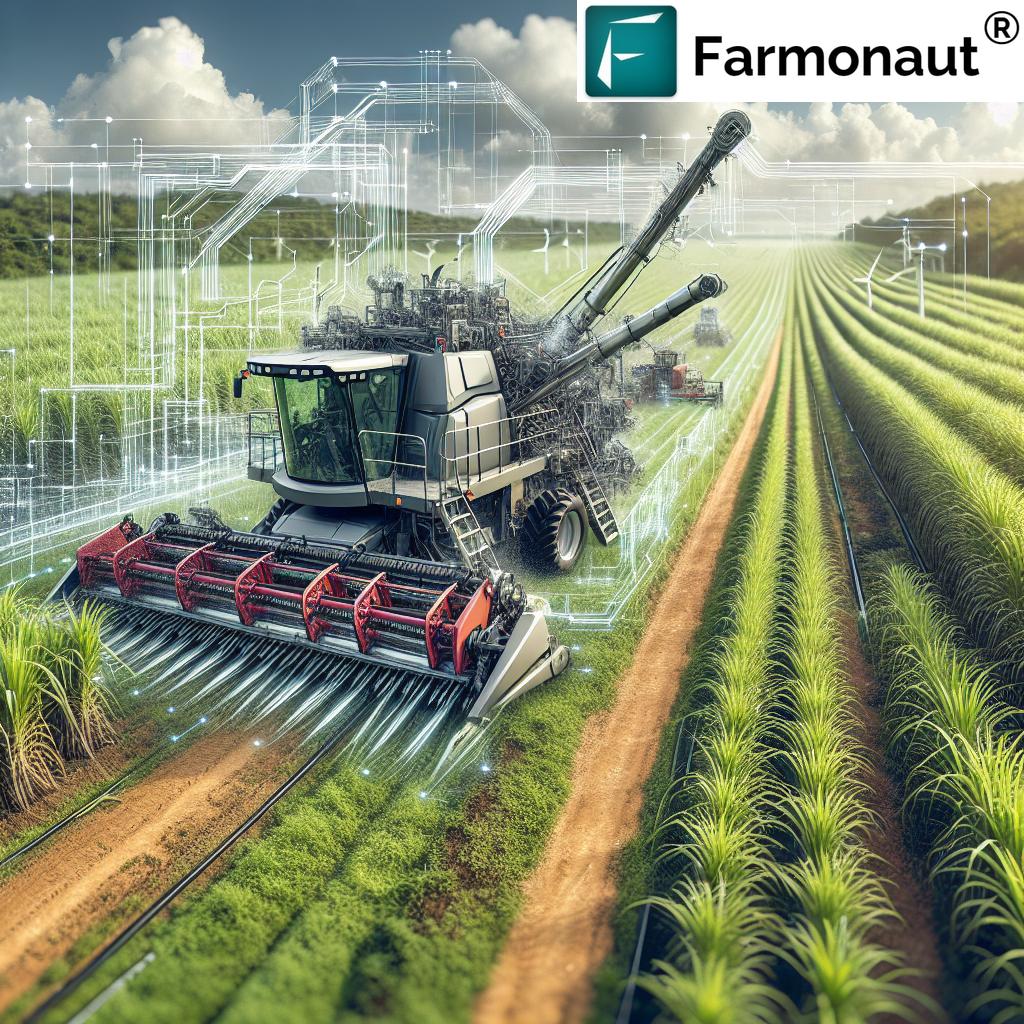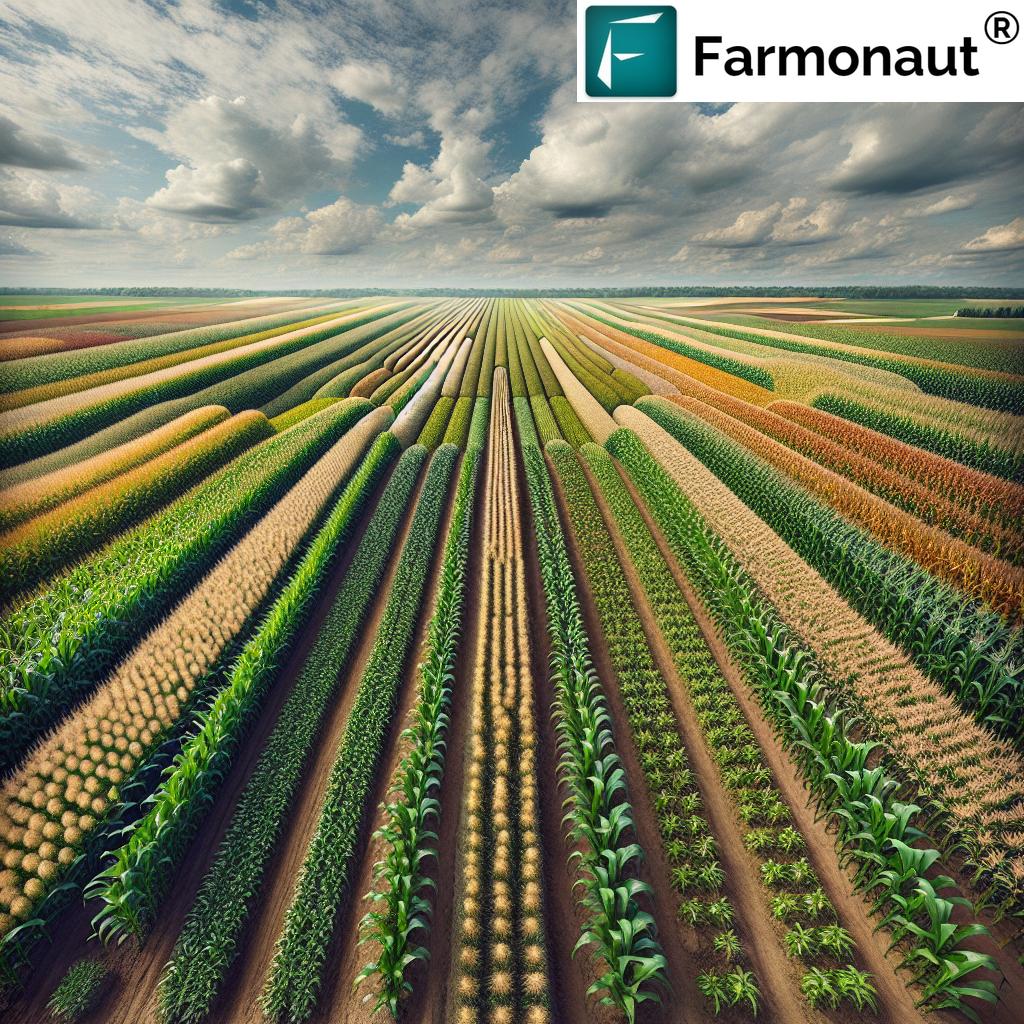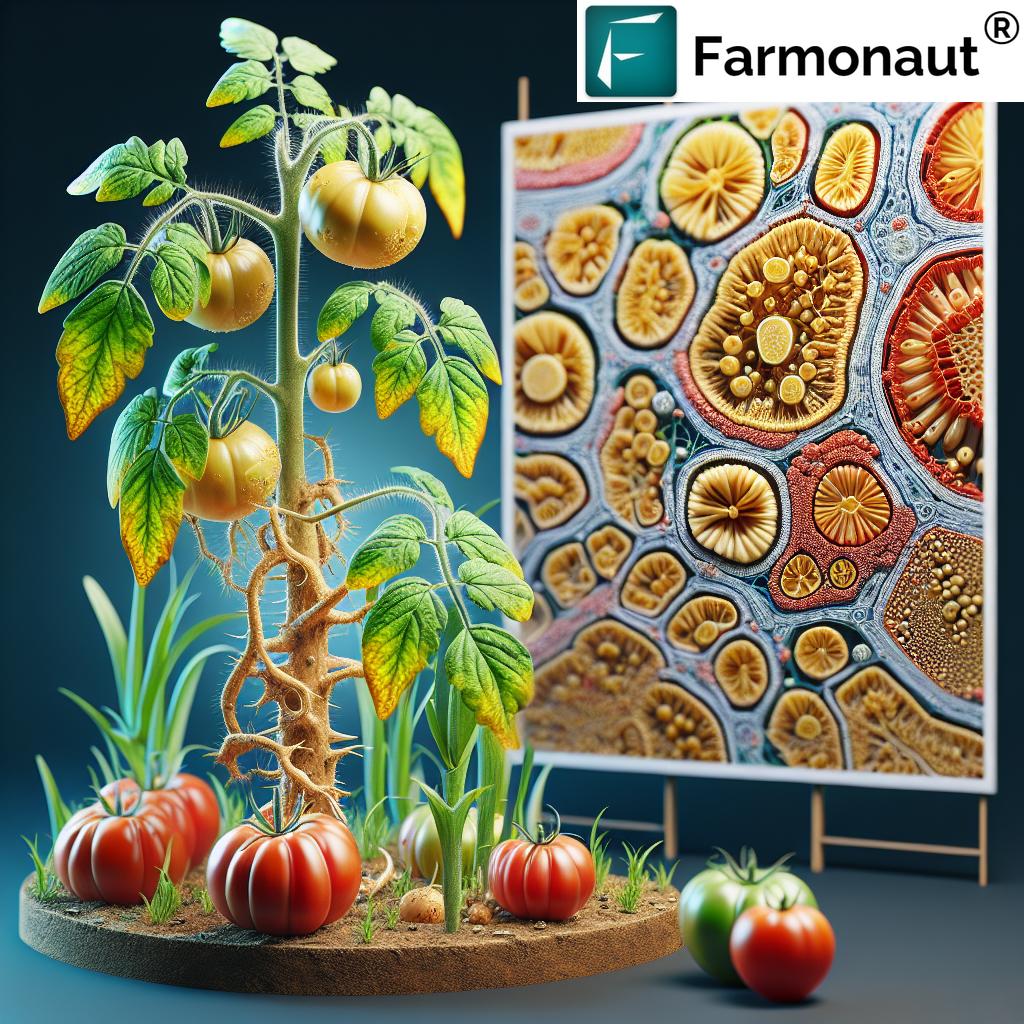“Biologicals can reduce chemical pesticide use by up to 50%, promoting more sustainable farming practices worldwide.”
Agricultural Biologicals vs Chemicals: 7 Key Differences for Sustainable Farming Practices
In the ever-evolving landscape of agriculture, the debate of agricultural biologicals vs chemicals is shaping sustainable farming practices, crop productivity, and environmental stewardship. Whether you’re a grower, agronomist, student, or stakeholder interested in the agricultural input market trends, understanding these two approaches—biological and chemical—is critical for informed decision-making in today’s agriculture.
This comprehensive guide explores key definitions, the role of integrated pest management, side-by-side comparisons, market insights, and how modern technology, like Farmonaut’s solutions, supports a sustainable, profitable farming future.
Understanding Agricultural Biologicals: What Are They?
Agricultural biologicals are a rapidly expanding segment of inputs in sustainable agriculture. These products are derived from natural organisms or substances, including specific microorganisms, plant extracts, beneficial fungi, and other organic materials. Unlike conventional agrochemicals, biologicals offer solutions that enhance crop growth and protection while minimizing residues and negative environmental impacts.
Categorization of Agricultural Biologicals:
- Biopesticides: Agents for pest, weed, and disease control. Includes microbial pesticides (such as bacteria, fungi, or viruses) and biochemical pesticides (plant extracts, pheromones).
- Biostimulants: Enhance nutrient uptake, improve plant stress tolerance, and boost yield by stimulating natural processes in plants.
- Biofertilizers: Contain living microorganisms that improve nutrient availability and utilization, promoting overall crop growth.
These approaches are paving the way for more organic crop protection, resilient fields, and environmentally friendly pest control systems within modern farming practices.
Key Biological Categories at a Glance
- Biopesticides in Agriculture: Use of Trichoderma fungi to combat soil-borne pathogens, Bacillus thuringiensis (Bt) to control caterpillar pests without harming beneficial insects or humans.
- Biostimulants in Agriculture: Seaweed extracts promote plant growth and tolerance to drought or salinity.
- Biofertilizers for Crop Growth: Rhizobium bacteria fix nitrogen in legume crops, reducing the need for synthetic fertilizers.
These biologicals, carefully integrated into crop management, represent the future of sustainable farming.
Chemical Inputs in Agriculture: An Overview
Chemical inputs in agriculture, known as agrochemicals, are synthetic substances formulated to protect crops and enhance productivity. Key categories include:
- Pesticides: Synthetic agents designed for control of pests (insecticides), diseases (fungicides), or weeds (herbicides).
- Fertilizers: Chemical compounds providing essential nutrients like nitrogen, phosphorus, and potassium to improve crop growth and yield.
- Herbicides: Chemicals specifically targeting unwanted plant species, reducing weed competition in crop fields.
While chemicals have undeniably boosted agricultural productivity and enabled large-scale farming, rising concerns over environmental contamination and human health drive the search for more sustainable alternatives.
- Persistence and Residues: Many chemical inputs leave residues in soil, water, and food—impacting both the ecosystem and consumers.
- Resistance Development: Overuse can result in resistance among pests or diseases, demanding higher doses or novel chemistries, with added economic and environmental costs.
The key for modern sustainable farming practices is to balance the advantages of chemical inputs with the sustainability and safety offered by biologicals.
Agricultural Biologicals vs Chemical Inputs: 7 Key Differences Unveiled
Modern crop management relies on informed choices regarding inputs. Let’s explore the seven critical differences between agricultural biologicals and chemical inputs in agriculture, focusing on sustainability, efficacy, and impact.

“Over 60% of integrated pest management programs now incorporate biopesticides for environmentally friendly crop protection.”
1. Environmental Impact: Sustainability at the Core
- Biologicals: Environmentally friendly pest control with rapid biodegradation. Target specificity minimizes disruption to non-target species (beneficial insects, birds, aquatic life). Residues degrade quickly, reducing water pollution and long-term contamination.
- Chemicals: Persistent in the environment. Can accumulate in water sources, soil, and food chains. Impact non-target organisms and contribute to pollution and ecosystem disturbance.
For instance, biopesticides like Bacillus subtilis break down within days, while some synthetic herbicides or insecticides may persist for weeks, increasing contamination risks.
2. Human Health Considerations: Safe Farming and Harvest
- Biologicals: Mostly non-toxic to humans and animals; minimal risks if properly handled. Rare cases of allergic reactions or irritation may occur, but biologicals generally foster safer working and food environments.
- Chemicals: Can cause acute or chronic health issues (skin irritation, respiratory problems, carcinogenic risks). Residues on harvested produce can threaten consumer safety.
3. Efficacy and Resistance Management: Result-Driven Performance
- Biologicals: Offer unique, multifaceted modes of action (e.g., disrupting pest metabolism, outcompeting pathogens). Lower risk of rapid resistance development among pests and pathogens. Well-suited for integrated pest management (IPM) where multiple control methods are needed for resilience.
- Chemicals: Initially high effectiveness, but overuse commonly leads to resistance in pest or disease populations, reducing efficacy over time. Resistance often demands increased dosages or costly compound rotations.
4. Residue Persistence: Lasting Effects on Soil, Crop, and Water
- Biologicals: Typically degrade within 1–7 days. Minimal or no detectable residues remain in the environment or food.
- Chemicals: Residues often persist for 20–45 days or more, contributing to potential buildup in soil, water, and harvest.
5. Cost Considerations: Balancing Immediate and Long-Term Value
- Biologicals: May have a slightly higher initial price per unit, but long-term savings come from soil health, lower resistance issues, decreased chemical input reliance, and improved market access for organic produce.
- Chemicals: Often lower upfront costs, but hidden expenses—such as environmental remediation, health treatments, resistance management—can add up substantially.
Farmonaut’s satellite-based farm management technology can help monitor and reduce carbon footprint—assisting farmers in lowering input use (including chemicals) and improving resource allocation for long-term farm profitability.
6. Regulatory Requirements: Pathways to Adoption
- Biologicals: Frequently benefit from a streamlined regulatory process due to natural origins and established safety. For example, U.S. EPA reviews biopesticides faster, facilitating rapid market entry, especially in organic crop protection.
- Chemicals: Face longer, stricter regulatory approval processes. High development and registration costs, plus ongoing scrutiny and occasional market withdrawals.
7. Integration with Sustainable Agriculture and Consumer Appeal
- Biologicals: Align with shifting consumer and regulatory demands for sustainability, traceability, and reduced chemical residues. Critical for organic certification and export markets.
- Chemicals: Still relied upon for high-pressure situations but increasingly under scrutiny. Often restricted or banned in high-value export and sensitive environmental regions.
Biologicals also facilitate blockchain-based traceability—a growing demand among consumers for proof of organic crop protection and minimal chemical residues at every supply chain stage.
Comparison Table: Agricultural Biologicals vs Chemical Inputs
| Key Differentiator | Agricultural Biologicals | Chemical Inputs |
|---|---|---|
| Mode of Action | Multiple pathways, often highly specific (e.g., microbial competition, enzymatic disruption, behavioral modification with pheromones). | Single target; direct toxic effect on pest, disease, or weed—often non-specific. |
| Environmental Impact | Minimal; rapid degradation; low risk to non-targets; environmentally friendly pest control. | Potentially high; can affect non-target species, cause pollution and long-term contamination. |
| Residue Persistence (est. days) | Up to 7 days | Up to 45 days |
| Effectiveness (est. % against common pests) | 65–85% (varies by conditions & integration) | 85–98% (high, but prone to resistance) |
| Cost (est. per acre) | $15–35 (potential for lower long-term cost) | $10–30 (may increase due to resistance, remediation, & regulations) |
| Human Health Impact | Low; generally non-toxic; rare allergic reactions possible. | Moderate to high; toxicities, acute and chronic health risks possible. |
| Regulatory Requirements | Less stringent; expedited registration processes. | Stringent; long, expensive approval; subject to ongoing review. |
Integrated Pest Management: Combining Biologicals and Chemicals for Maximum Sustainability
The future of sustainable farming practices doesn’t lie in an “either/or” debate. Instead, it’s about integrated pest management (IPM)—a holistic strategy that utilizes both biological and carefully chosen chemical inputs to minimize risks, enhance crop productivity, and support ecosystem balance.
- Biologicals as First Line Defense: Regular use of biopesticides, biofertilizers, and biostimulants strengthens plants against stress, suppresses pest/disease outbreaks, and supports the soil microbiome.
- Targeted Chemical Applications: Synthetic pesticides or herbicides applied judiciously, only when biological options or cultural controls prove insufficient, can quickly curb severe infestations without escalating resistance.
- Rotation & Resistance Management: Alternating between biological and chemical modes of action slows resistance formation in pests and pathogens, prolonging the effectiveness of all available tools.
- Supporting Tech Tools: Using solutions like the Farmonaut Large Scale Farm Management app empowers farmers to detect early stress, track the effectiveness of interventions, and fine-tune input timing based on real-time satellite and AI data.
Best Practices for Successful Integration:
- Scout fields regularly and monitor pest/disease populations.
- Apply biopesticides preventively, whenever pest thresholds are low, to reduce future outbreaks.
- Leverage biostimulants in agriculture to enhance plant stress tolerance during drought, late frost, or other weather events.
- Use synthetic chemicals as a last resort—prioritize reduced risk and rotation to slow resistance.
- Utilize digital ag platforms, like Farmonaut’s multi-platform app, which offer tailored crop health monitoring, resource management, and actionable insights.
Agricultural Input Market Trends and Future Outlook
The shift toward biologicals is unmistakable. According to MarketandMarkets:
- The global agricultural biologicals market is estimated to reach $31.8 billion by 2029 with a robust CAGR of 13.8% from 2024 to 2029.
- Drivers include consumer demand for organic crop protection, environmental regulations, and sustainable farming practices.
- Farmers worldwide, especially in North America, Europe, and rapidly growing economies, are seeking biofertilizers for crop growth, biopesticides, and biostimulants to gain a competitive edge.
Sectors investing in biologicals:
- Row crops and cereals: Adoption for increased resilience against foliar diseases, nematodes, and drought stress.
- Fruits and vegetables: Biologicals meet export requirements for residue limits, improve shelf-life, and enable clean-label marketing.
- Plantation and forest advisory: As promoted through Farmonaut’s crop plantation and forest advisory service, biologicals reduce chemical load while ensuring biodiversity and long-term health of perennial crops.
Continued R&D in strain improvement, formulation technology, and application methods will further expand the reliability and accessibility of these sustainable inputs.
Farmonaut Approach: Empowering Sustainable Farming with Data and Technology
As the agricultural sector pivots towards sustainability and precise management of inputs, integrating advanced technology is no longer optional—it’s essential.
At Farmonaut, our mission is to bridge the gap between tradition and technology for farmers everywhere. We deliver satellite-based farm management, AI-driven advisory, and resource tools to help farmers make optimal, environmentally conscious input choices—including the shift to biologicals, optimal fertilizer use, and smart pest control methods.
- Real-Time Crop Health Monitoring: Our multispectral satellite imagery offers actionable insights into crop health, stress detection, irrigation status, and input efficiency. Farmers can assess the impact of biostimulants, biofertilizers, or pinpoint areas needing organic or chemical intervention.
- AI-Based Farm Advisory (Jeevn AI): Delivers personalized weather forecasts, disease/pest risk assessment, and expert crop management guidance—reducing guesswork and helping optimize both biological and chemical input use.
- Blockchain Traceability: With Farmonaut’s product traceability, our clients can document every input used—from biopesticides to synthetic fertilizers—offering downstream consumers verified proof of low-residue and sustainable produce.
- Fleet and Resource Management: Our fleet management module facilitates optimized logistics, sustainable farm operations, and reduces energy inputs for agribusinesses of every size.
- Carbon Footprinting Solutions: Our carbon footprinting tools help agribusinesses track, report, and minimize emissions, aligning input application strategies with global sustainability targets.
- Support for Smallholders to Large Enterprises: From solo growers to government and corporate-level users, Farmonaut’s crop loan and insurance solutions bring access, verification, and financial security for all.
Want to leverage these technologies? Get started instantly via our web app, API, or on your Android/iOS device.
API Access: Need to automate farm monitoring or input tracking? Try our user-friendly Farmonaut API and detailed API developer docs.
FAQ: Biologicals, Chemicals, and Sustainable Agriculture
What are agricultural biologicals and how do they work?
Agricultural biologicals are inputs derived from living organisms (like bacteria, fungi, or viruses), plant extracts, or other organic sources. They function by either directly inhibiting pests, stimulating beneficial plant processes for growth and stress resilience, or improving nutrient availability through biofertilization. Biologicals tend to act more specifically compared to chemicals, making them ideal for sustainable and integrated farming practices.
How do chemical inputs differ from biologicals in pest management?
Chemical inputs (pesticides, fertilizers, herbicides) are generally synthetic and act quickly against a wide range of pests, diseases, and weeds. However, they may also impact non-target organisms and leave residues. Biologicals, like biopesticides, offer environmentally friendly pest control, specificity, and reduced non-target effects—though effectiveness may vary based on environmental conditions.
Are biologicals less effective than chemicals?
Biologicals can be highly effective—especially as part of an integrated pest management system—but may not always offer the rapid, broad-spectrum control of synthetic chemicals. However, their unique modes of action help in resistance management and contribute to long-term sustainability.
Are chemical residues on crops harmful to humans?
Some synthetic chemical residues can be harmful, especially if present above regulatory limits. They may cause acute or long-term health issues, making residue reduction and selection of safer inputs critical for food safety.
Why is it important to combine biologicals and chemicals?
Combining biological and chemical approaches in integrated pest management maximizes benefits—reducing resistance risk, environmental harm, and ensuring high crop productivity. It’s about using the right tool, at the right time, for both yield and sustainability.
How can technology help optimize input use in agriculture?
Technology—such as Farmonaut’s satellite-based farm management, AI advisories, and blockchain traceability—empowers farmers to make precise input decisions. This reduces waste, boosts yields, documents sustainability, and supports organic or residue-free marketing.
Conclusion: The Future of Inputs in Sustainable Agriculture
Agricultural biologicals and chemical inputs are not foes, but partners in the journey to sustain productivity, profitability, and environmental health in agriculture. As consumer and regulatory demands for sustainable farming practices intensify, it is critical to embrace a balanced, knowledge-driven approach—integrating the best of both input strategies and leveraging advanced technology.
At Farmonaut, our commitment is to empower farmers with the tools, insights, and data to make smart decisions for sustainability and growth—ensuring a healthy planet and productive harvests for generations to come.
Explore the world of advanced, sustainable input management—try Farmonaut’s digital tools today.











